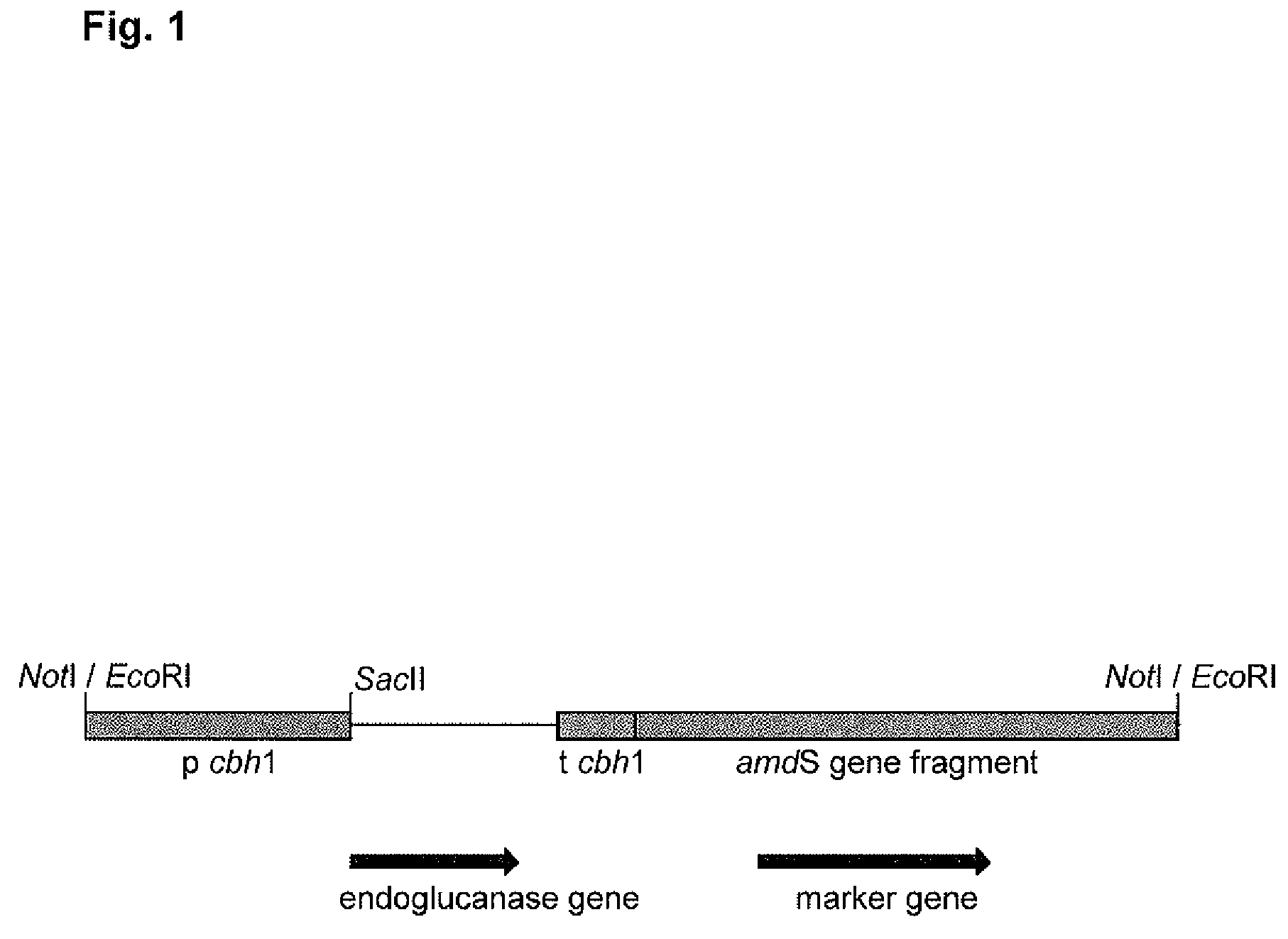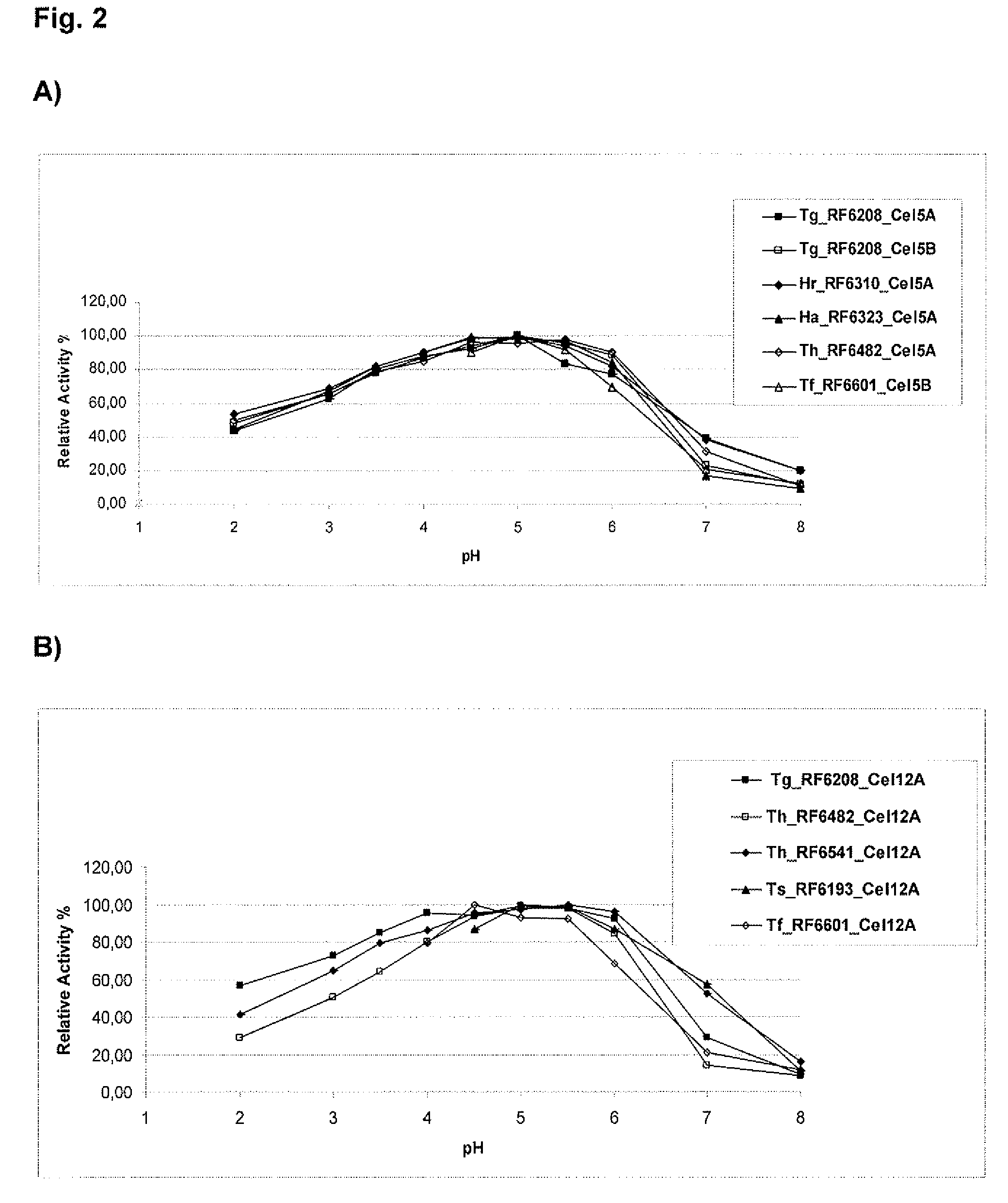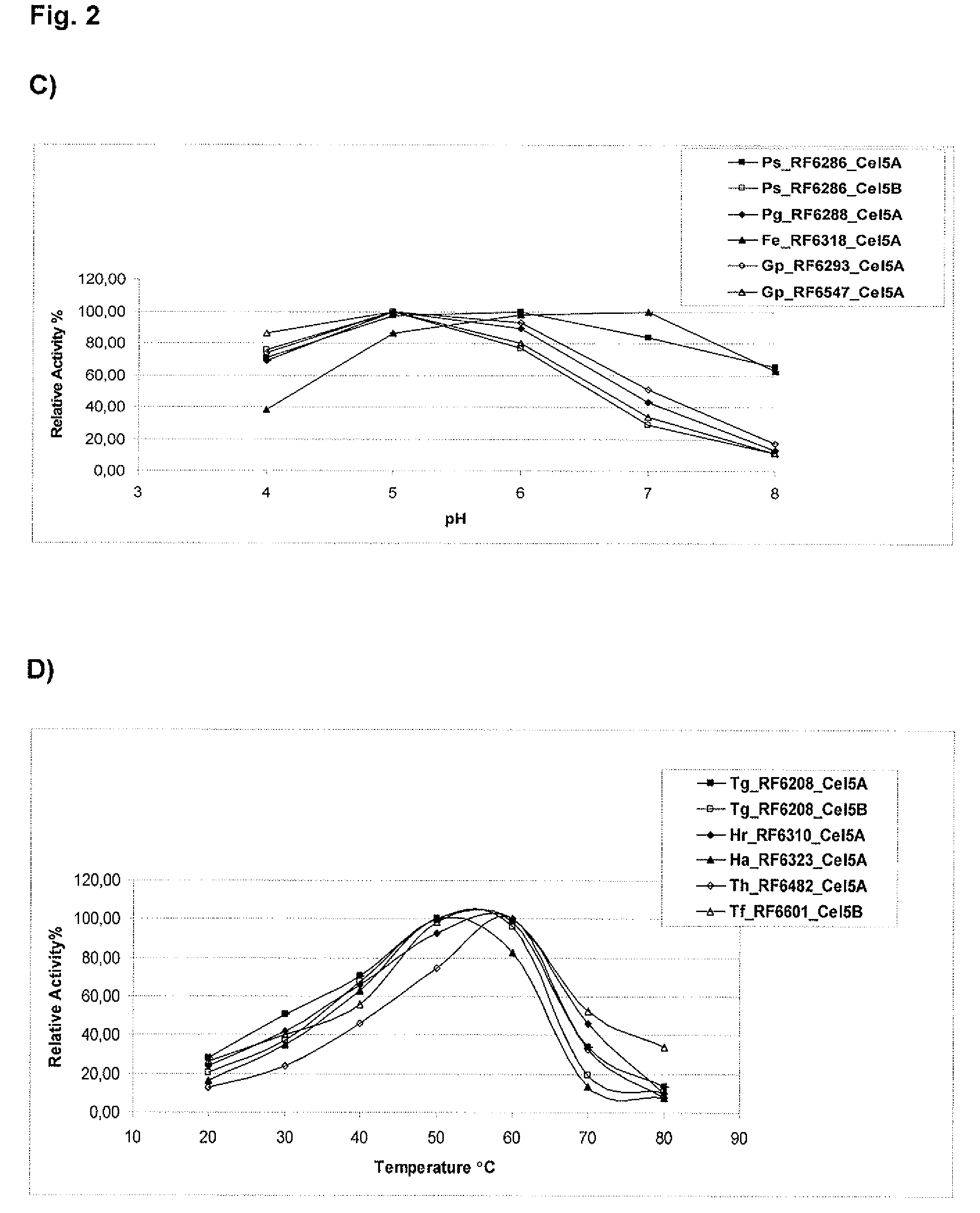Fungal endoglucanases, their production and use
a technology of endoglucanase and fungus, applied in the field of new products, can solve the problems of reducing the strength of fabric, burdening the laundering apparatus, and hampered the practical use of cellulases, so as to improve the cleaning effect of textiles, improve the fabric care properties, and save resources
- Summary
- Abstract
- Description
- Claims
- Application Information
AI Technical Summary
Benefits of technology
Problems solved by technology
Method used
Image
Examples
example 1
Screening for Strains Expressing Low-Temperature Cellulolytic Activity
[0075]About 180 fungal strains in the Roal Oy culture collection were tested for their ability to produce low-temperature cellulolytic activity. The fungal strains were cultivated in a volume of 100 ml on a rotary shaker (200 rpm) at a temperature of 20° C. for 3-7 d. Several production media were tested containing Solka Floc cellulose as a carbon source. After the cultivation the cells and other solids were collected by centrifugation and the supernatant was recovered. If not used immediately, the preparation was stored in aliquots at −20° C.
[0076]For the estimation of the enzyme activity at lower temperatures, assays were performed of the shake flask cultivation preparation at 30° C. and 50° C. for 1 h. All shake flask supernatants were assayed for the following activities:
[0077]The endoglucanase (CMCase) activity:
[0078]This was assayed with 3% (w / v) carboxymethylcellulose (CMC) as the substrate in 50 mM citrate...
example 2
Cloning of Endoglucanase Genes from Trichoderma sp. RF6193, Trichoderma gamsii RF6208, Hypocrea rufa / Trichoderma viride RF6310, Hypocrea atroviridis RF6323, Trichoderma harzianum RF6482 and RF6541, Trichoderma fertile RF6601, Hypocrea koningiopsis RF6604, Penicillium spinulosum RF6286, Penicillium griseofulvum Dierckx RF6288, Geomyces pannorum RF6293 and RF6547, and Fusarium cf. equiseti RF6318
[0083]Standard molecular biology methods were used in the isolation and enzyme treatments of DNA (plasmids, DNA fragments), in E. coli transformations, etc. The basic methods used are described in the standard molecular biology handbooks, e.g. Sambrook et al. (1989) and Sambrook and Russell (2001).
[0084]Genomic libraries of Trichoderma sp. RF6193, Trichoderma gamsii RF6208, Hypocrea rufa / Trichoderma viride RF6310, Hypocrea atroviridis RF6323, Trichoderma harzianum RF6482 and RF6541, Trichoderma fertile RF6601, Hypocrea koningiopsis RF6604 and Penicillium griseofulvum Dierckx RF6288 were made t...
example 3
Production of Recombinant Endoglucanase Proteins in Trichoderma reesei
[0113]Expression plasmids were constructed for overexpression of recombinant endoglucanase proteins from Trichoderma sp. RF6193, Trichoderma gamsii RF6208, Hypocrea rufa / Trichoderma viride RF6310, Hypocrea atroviridis RF6323, Trichoderma harzianum RF6482 and RF6541, Trichoderma fertile RF6601, Hypocrea koningiopsis RF6604, Penicillium spinulosum RF6286, Penicillium griseofulvum Dierckx RF6288, Geomyces pannorum RF6293 and RF6547, and Fusarium cf. equiseti RF6318 in Trichoderma reesei. The expression plasmids constructed are listed in Table 14. The recombinant egl2 / cel5 and egl3 / cel12 genes, including their own signal sequences, were exactly fused to the T. reesei cbh1 / cel7A promoter. The transcription termination was ensured by the T. reesei cbh1 / cel7A terminator and the A. nidulans amdS marker gene was used for selection of the transformants as described in Paloheimo et al. (2003). The linear expression cassette...
PUM
| Property | Measurement | Unit |
|---|---|---|
| temperature | aaaaa | aaaaa |
| temperature | aaaaa | aaaaa |
| MW | aaaaa | aaaaa |
Abstract
Description
Claims
Application Information
 Login to View More
Login to View More - R&D
- Intellectual Property
- Life Sciences
- Materials
- Tech Scout
- Unparalleled Data Quality
- Higher Quality Content
- 60% Fewer Hallucinations
Browse by: Latest US Patents, China's latest patents, Technical Efficacy Thesaurus, Application Domain, Technology Topic, Popular Technical Reports.
© 2025 PatSnap. All rights reserved.Legal|Privacy policy|Modern Slavery Act Transparency Statement|Sitemap|About US| Contact US: help@patsnap.com



